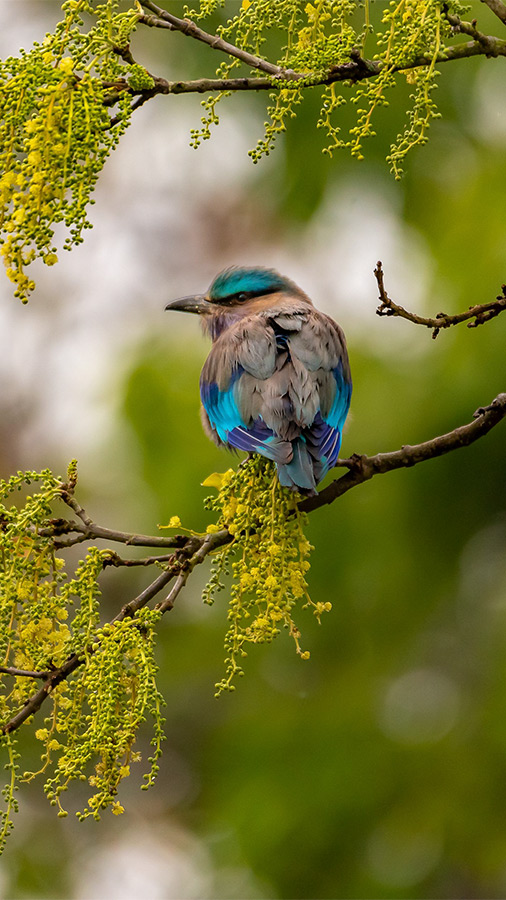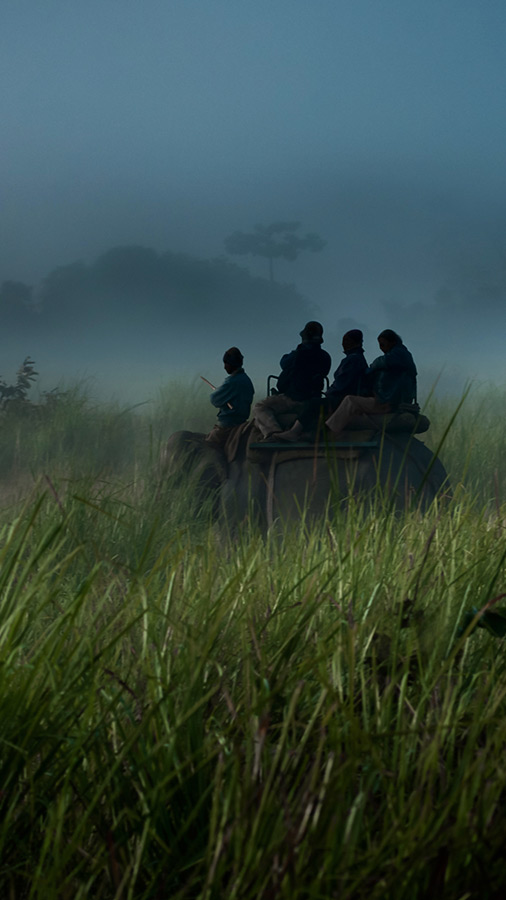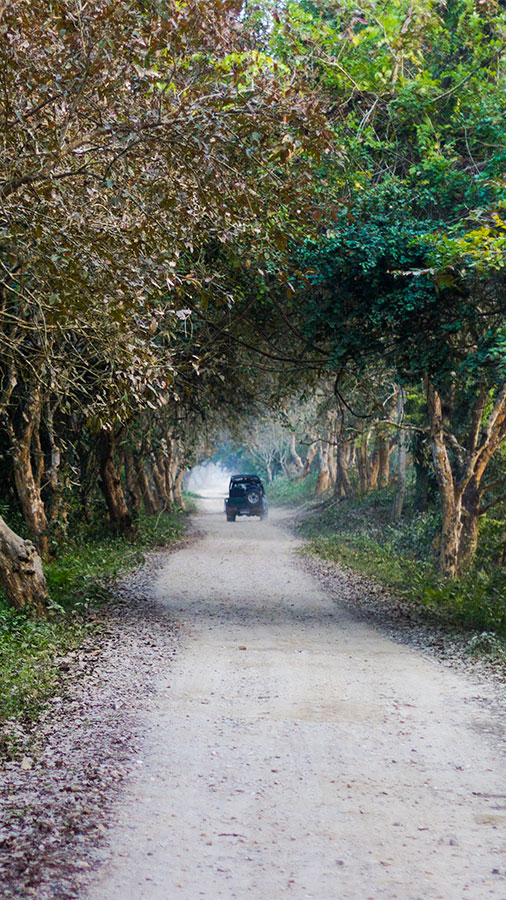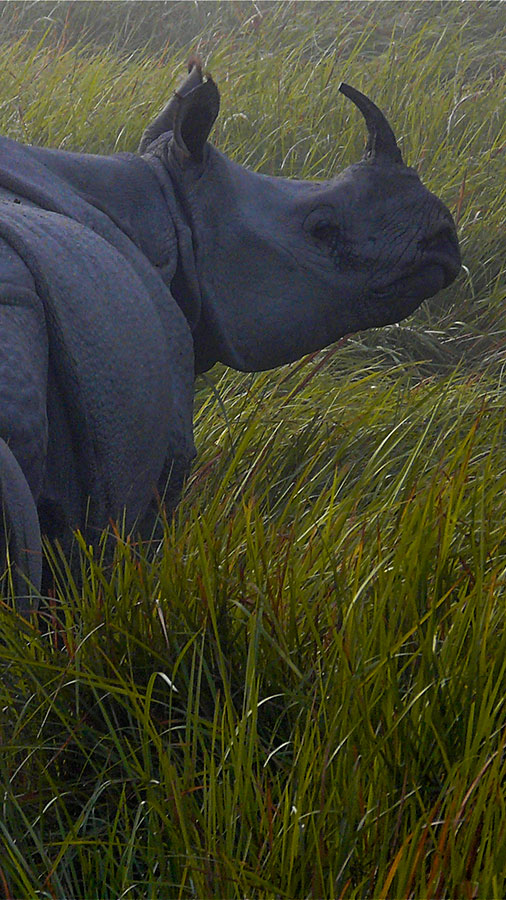Kaziranga Travel Guide: Attractions & How to Plan Your Trip
Why Kaziranga?
Kaziranga, located in the heart of Assam, is a UNESCO World Heritage Site renowned for its unparalleled wildlife and natural beauty. It is famously the only home to the majestic One-Horned Rhinoceros in its natural habitat, making it a paradise for wildlife enthusiasts and photographers alike. The park’s sprawling grasslands, wetlands, and forests host a rich diversity of flora and fauna, including tigers, elephants, swamp deer, and over 450 species of birds, creating a truly immersive nature experience.
Situated around 240 kilometers from Guwahati, Kaziranga is easily accessible and can be visited over a weekend or as part of a longer Northeast India itinerary. The park offers safari experiences via jeep or elephant, allowing visitors to witness wildlife at close quarters. Jeep safaris cover the broader park area, while elephant safaris give an intimate encounter with rhinos and other animals in areas inaccessible by vehicles. Carrying binoculars, cameras, and comfortable clothing is highly recommended to make the most of your wildlife explorations.
Beyond the wildlife, Kaziranga and its surroundings provide a scenic retreat with serene rivers, waterfalls, and lush tea gardens. The region’s orchid diversity, exemplified at the National Orchid and Biodiversity Park, adds another dimension for nature lovers. Visiting Kaziranga combines adventure, relaxation, and cultural immersion, making it an essential destination when exploring Assam and the Northeast.
Sightseeing in Kaziranga
Kaziranga offers more than just wildlife safaris. The park and its surrounding areas feature waterfalls, forests, lakes, and cultural sites that provide a rich tapestry of experiences. From morning safaris in misty grasslands to afternoons spent exploring local attractions, Kaziranga appeals to both adventure seekers and nature admirers. The landscape changes with seasons, lush green during the monsoon, golden-hued in winter, and vibrant during spring, offering unique photographic opportunities year-round.
- Kaziranga National Park: The primary attraction, featuring jeep and elephant safaris across its distinct ranges. Famous as the stronghold of the One-Horned Rhinoceros — often dubbed a Jurassic-era animal for its ancient lineage and prehistoric appearance — the park is also home to the Indian Wild Water Buffalo, Royal Bengal Tiger, Asiatic Elephant, and Swamp Deer — collectively celebrated as the Big Five of Kaziranga — along with more than 450 species of birds. Each range offers a unique experience: Kohora (Central Range) is the most popular for rhino sightings and balanced biodiversity; Bagori (Western Range) is best known for dense rhino and buffalo populations along with scenic wetland views; Agoratoli (Eastern Range) is a haven for migratory birds and the elusive Bengal tiger, along with picturesque landscapes; and Bhurapahar Range offers hilly terrain, amazing hilltop view of the Brahmaputra River and its basin, and a chance to see elephants in their natural habitat. A special highlight is the chance to spot the endangered Gangetic River Dolphin in the nearby Brahmaputra waters, making Kaziranga a complete wildlife experience. ⓘ Note: Elephant safaris in Kaziranga National Park are conducted only in the Western Range (Bagori) and the Central Range (Kohora). Please note that the Central Range is reserved exclusively for foreign tourists and VIP visitors, while domestic tourists can generally access the Western Range.
-
Kakochang / Kaipholangsho Waterfalls:
A scenic cascade located amidst lush tea plantations and rubber groves, this waterfall offers not only breathtaking views but also a rewarding short trek through forested trails and rocky terrain — perfect for those seeking a mild hiking adventure. The route itself is dotted with viewpoints overlooking verdant hills and tea gardens, making the journey as enjoyable as the destination. Visitors can also relish the taste of locally grown seasonal fruits such as pineapples, bananas, and oranges sold by roadside vendors, adding a delightful local flavor to the experience. The surrounding forests and hillocks make it a refreshing detour from the wildlife-centric itinerary.
ⓘ The best time to visit Kakochang Waterfalls is from October to April, when the water flow is strong yet safe for exploration, and the surrounding landscape turns vibrant green. Carry sturdy footwear and avoid visiting during heavy rains, as the trail can become slippery. Early morning or late afternoon visits are ideal for photography and avoiding crowds.
- Tea Gardens: Expansive tea plantations around Kaziranga not only offer picturesque landscapes but also an insight into Assam’s world-famous tea industry. Visitors can stroll through the manicured green carpets, learn about traditional tea processing, and even sample fresh brews right at the source.
- National Orchid and Biodiversity Park: A vibrant attraction showcasing more than 500 species of orchids, along with medicinal plants, native herbs, and a cultural museum. It’s a haven for botany enthusiasts, photographers, and anyone curious about the ecological and cultural richness of Assam. Folk performances and handicraft displays add a cultural flavor to the visit. Cultural shows highlighting the rich traditions of Assamese tribes such as the Bodo, Mishing, Karbi, Dimasa, and Tiwa are held at regular intervals during the day. Additionally, special cultural evenings are organized daily, featuring music, dance, and storytelling that bring Assam’s heritage to life.
Nearby destinations enrich a Kaziranga trip. You can further explore Majuli, the world’s largest river island, for its vibrant Assamese neo-Vaishnavite culture, scenic riverbanks, and historic satras pioneered by Mahapurush Srimanta Sankardev and Mahapurush Madhavdev. Visitors can experience traditional mask-making, cultural performances, and events such as Raas Leela (celebrated during Raas Purnima, usually in November), along with village walks and cycling across the island. Wildlife enthusiasts can head to Nameri National Park for birding and forest treks, or explore the Hollongapar Gibbon Wildlife Sanctuary, renowned for its endangered hoolock gibbons and lush evergreen forests. For natural retreats and scenic landscapes, head to Dima Hasao district, where you can visit Panimur Waterfalls, a spectacular cascade surrounded by forested hills ideal for picnics and nature photography, and Umrangso Lake, a tranquil reservoir with rolling hills perfect for boating and relaxation. Other nearby attractions include the Maha Mrityunjay Temple in Nagaon district, famous for housing the world’s largest Shivling and attracting spiritual seekers. Combining these with Kaziranga ensures a comprehensive Assam itinerary, blending wildlife, nature, spirituality, and cultural immersion.
How to Reach Kaziranga
By Road
Kaziranga is approximately 240 km from Guwahati. The drive takes around 5–6 hours on well-maintained roads, passing scenic tea gardens and river valleys. During the monsoon, travelers should carry raincoats or umbrellas.
By Air
The nearest airport is Tezpur Airport (TEZ), roughly 95 km from Kaziranga. Most visitors fly into Guwahati Airport (GAU) and drive to Kaziranga, enjoying the scenic Assam countryside along the way.
By Train
The closest railway stations are in Furkating and Jagiroad. Taxis or buses connect these stations to Kaziranga, with travel times ranging from 2–5 hours depending on the station.
Permits?
Kaziranga does not require an Inner Line Permit (ILP) or Protected Area Permit (PAP) for Indian or foreign nationals. Visitors can freely explore the park and nearby attractions without any permit formalities, though safari bookings are mandatory.
Weather in Kaziranga
Kaziranga’s weather plays a key role in planning safaris and outdoor experiences. The park experiences a tropical monsoon climate with three distinct seasons — winter, summer, and monsoon — each influencing both the park’s landscape and wildlife behavior.
| Season | Months | Temperature Range | Highlights |
|---|---|---|---|
| Winter | November – February | 8°C – 25°C | Cool mornings, sunny days, and excellent visibility for spotting One-Horned Rhinos and migratory birds. Ideal for safaris and photography. |
| Summer | March – May | 18°C – 35°C | Warm but dry, suitable for early-morning safaris. Wildlife congregates near waterholes, enhancing sighting chances. |
| Monsoon | June – October | 25°C – 35°C | Heavy rainfall (1,500–2,500 mm annually) floods grasslands; park remains closed. Lush green scenery, ideal for off-season travelers seeking serenity. |
Kaziranga does not experience snowfall, but dense fogs are common during winter dawns. Carry light woollens for morning safaris and breathable cottons for daytime comfort.
Best Time to Visit Kaziranga
The ideal time to visit Kaziranga is during the dry winter months, which are also the park’s official open season for safaris:
- November–April: The park is open for official jeep and elephant safaris. Wildlife sightings are easier due to lower water levels.
- May–June: Safari options continue until the onset of heavy rains; temperatures rise and some areas may become inaccessible.
- July–October: The park closes during monsoon as floodwaters make most areas inaccessible, but the surrounding landscapes are lush and scenic.
Tickets & Safari Fees at Kaziranga National Park ()
Kaziranga National Park offers a range of safari options to suit different preferences. Here's a detailed breakdown of the ticket and safari fees:
Park Entry Fees (As on January 2025)
| Category | Fee (per person per day) |
|---|---|
| Indian Nationals | ₹115 |
| Foreign Nationals | ₹715 |
Jeep Safari Fees (As on January 2025)
| Range | Indian Nationals (per jeep) | Foreign Nationals (per jeep) |
|---|---|---|
| Kohora (Central) | ₹2733—₹3308 | ₹3333—₹6908 |
| Bagori (Western) | ₹2833—₹3408 | ₹3433—₹7008 |
| Agoratoli (Eastern) | ₹3133—₹3708 | ₹3733—₹7308 |
| Bhurapahar | ₹3733—₹4308 | ₹4333—₹7908 |
Elephant Safari Fees (As on January 2025)
| Category | Fee (INR) |
|---|---|
| Indian Nationals | ₹950 |
| Foreign Nationals | ₹2500 |
Additional Fees (As on January 2025)
| Category | Fee (INR) |
|---|---|
| Still Camera Fee (Domestic) | ₹100 |
| Still Camera Fee (Foreign) | ₹200 |
| Video Camera Fee | ₹1000 |
Important: Safari fees and timings are subject to change. Visitors are advised to check official sources or authorized booking platforms for the latest information.
Sample Itinerary
Day 1: Guwahati → Kaziranga → Afternoon Jeep Safari / Evening show in National Orchid and Biodiversity Park (depending on available time)
Day 2: Morning Elephant Safari → Kakochang / Kaipholangsho Waterfalls
Day 3: Morning Elephant Safari/Explore Tea gardens → Explore National Orchid and Biodiversity Park → Taste local cuisine → Afternoon jeep safari
Day 4: Optional Morning jeep safari → Optional excursion to nearby destinations like Nameri National Park or Tezpur / Departure to Guwahati
Other attractions to include during your visit are Maha Mrityunjay Temple, Hollongapar Gibbon Sanctuary, and Dima Hasao District (covering Panimur Waterfalls and Umrangso Lake). For more detailed itineraries and Kaziranga tour packages, check out our Kaziranga Tour Packages. Customizing the safari duration and nearby excursions can enhance the wildlife and nature experience.
Travel Tips
- Carry binoculars, cameras, and extra batteries for safari photography.
- Bring umbrellas or raincoats during monsoon months.
- Wear comfortable clothing and sturdy footwear for treks and waterfall visits.
- Carry a dust mask or scarf, especially during jeep safaris in the dry season, to avoid discomfort from dust.
- Keep local cash handy; ATMs are limited near park ranges.
- Book safari tickets in advance to ensure availability.
- Be prepared to get separated during elephant safaris, as seat allocation is based on weight balance for the elephants’ safety and comfort.
- Respect park rules and maintain silence during wildlife spotting.
- Morning and late afternoon are the best times for wildlife sightings.

Birding

Elephant Safari

Jeep Safari

Rhino Sightseeing
Frequently Asked Questions on Kaziranga (FAQs)
Which is the Best Time to Visit Kaziranga?
The ideal time to visit Kaziranga National Park is between November and April. The park remains officially closed from May to October due to summer heat, heavy monsoon rainfall, flooding, and the breeding season of wildlife. Occasionally, depending on weather conditions, the park may open slightly earlier or close later than the usual dates. Visiting during the winter months ensures comfortable weather and higher chances of wildlife sightings.
What is Kaziranga famous for?
Kaziranga National Park is world-renowned for being the stronghold of the One-Horned Rhinoceros (Rhinoceros unicornis), often called a Jurassic-era animal due to its ancient lineage. The park also hosts other members of its famous Big Five: Indian Wild Water Buffalo, Royal Bengal Tiger, Asiatic Elephant, and Swamp Deer. In addition, the park is home to over 450 bird species, diverse flora, and unique amphibians and reptiles. Visitors on a typical safari can expect to spot rhinos, elephants, water buffaloes, hogs, deer, stags, and a variety of migratory birds. On rare lucky days, a Royal Bengal Tiger may be sighted in its natural habitat.
When does the Elephant Safari start in Kaziranga National Park?
Elephant safaris in Kaziranga start early in the morning, typically around 5:00 AM and 6:00 AM, with two batches conducted daily. Each safari lasts approximately one hour and provides an intimate wildlife experience, allowing visitors to get close to rhinos, elephants, and other animals in areas not accessible to jeeps. Elephant safaris are available only in the Kohora (Central) and Bagori (Western) ranges.
Where is Kakochang Waterfalls located?
Kakochang Waterfalls, also known as Kaipholangsho Waterfalls, is located about 15 km south of Bokakhat town. Bokakhat itself lies roughly 20 km east of the Central Range (Kohora) of Kaziranga National Park. Visitors can enjoy scenic trekking and hiking trails around the falls, and local vendors sell freshly grown fruits like pineapples along the route, offering a taste of the region’s produce.
How large is Kaziranga National Park?
Kaziranga National Park currently spans approximately 430 sq. km across the districts of Golaghat and Nagaon in Assam. It was originally established in 1905 as a small reserve to protect the One-Horned Rhinoceros and has expanded several times, gaining UNESCO World Heritage Site status in 1985. Including its buffer and extension areas, the total protected area reaches nearly 1,200 sq. km.
How many ranges does Kaziranga have and which are popular for safaris?
Kaziranga is divided into four main ranges:
• Kohora (Central Range) – the most popular for rhino sightings and biodiversity.
• Bagori (Western Range) – scenic wetlands and dense rhino populations.
• Agoratoli (Eastern Range) – great for birdwatching and elusive tigers.
• Bhurapahar Range – hilly terrain, trekking, and elephants in their natural habitat.
Can visitors spot tigers in Kaziranga?
Yes, but spotting a Royal Bengal Tiger is rare due to their elusive nature. Tigers are mostly found in the Agoratoli (Eastern Range) and Kohora (Central Range). Early morning jeep safaris or elephant safaris improve your chances of sightings.
Are guides mandatory in Kaziranga?
While not legally mandatory, hiring a certified park guide is highly recommended. Guides enhance wildlife spotting, provide safety instructions, and share insights into flora, fauna, and local culture.
Can I go on both Jeep and Elephant safaris on the same day?
Yes, but it is recommended to schedule them on separate days to maximize wildlife encounters (if you have time). If both safaris occur on different days, an additional park entry fee will apply for each day of entry.
What kind of wildlife can I expect to see?
Visitors commonly see:
• One-Horned Rhinoceros
• Indian Wild Water Buffalo
• Asiatic Elephant
• Swamp Deer
• Wild boars, hogs, and various deer species
• Over 450 species of birds including migratory waterfowl
• On rare occasions, Royal Bengal Tigers and Gangetic River Dolphins in the nearby Brahmaputra river.
Is Kaziranga suitable for family visits?
Absolutely! Kaziranga offers family-friendly experiences with guided jeep safaris, elephant rides (age and weight restrictions apply), and cultural excursions nearby. Safety measures and park rules make it suitable for children and seniors alike.
Can I visit Majuli along with Kaziranga?
Yes! Majuli, the world’s largest river island, is just a few hours from Kaziranga. Visitors can explore neo-Vaishnavite satras established by Mahapurush Srimanta Sankardev and Mahapurush Madhavdev, enjoy traditional mask-making, cultural performances like Raas Leela, and cycle through village trails. Majuli also provides scenic river views and local Assamese cuisine experiences.
Is photography allowed in Kaziranga?
Yes, photography is allowed, but a camera fee is applicable. Professional photography or videography may require prior permission from park authorities.
Are there accommodation options inside Kaziranga?
No accommodations are built inside the park perimeter. Visitors can stay at a variety of options around the park, including government-approved forest lodges, eco-resorts, private hotels, budget homestays, and guesthouses near the Kohora, Bagori, and Agoratoli ranges. During the peak season (November–April), some travelers even arrange to stay in private homes due to high demand, but staying inside the park itself is not permitted. It is strongly advised to book in advance to secure preferred accommodations.
Can I visit during monsoon?
The park is officially closed from May to October due to flooding. During the monsoon, roads may be inaccessible, but the surrounding tea gardens and landscapes remain lush and picturesque.
Are there any cultural experiences within the park?
Yes, the nearby villages often host Assamese tribal folk dances, traditional music performances, and handicraft exhibitions that showcase the rich local culture. The Orchid and Biodiversity Park at Kaziranga also holds regular cultural shows featuring regional art forms. Travelers can further explore spiritual and cultural sites such as the Maha Mrityunjay Temple in Nagaon and the Majuli River Island — famous for its Satras (Vaishnavite monasteries) and vibrant cultural heritage.
How far is Kaziranga National Orchid & Biodiversity Park from Kohora?
The Kaziranga National Orchid & Biodiversity Park is located approximately 2 kilometers east of Kohora, along the National Highway 37. It’s easily accessible by local transport, private vehicles, or on foot for visitors staying nearby.
What can visitors experience at Kaziranga Orchid Park?
The park offers a blend of nature, culture, and education. Visitors can explore:
• A large orchidarium showcasing over 500 species of wild orchids native to Northeast India.
• A museum displaying traditional Assamese tools, garments, and heritage items.
• A bamboo garden, fish pond, and a rice museum highlighting local agricultural practices.
• Daily folk dance and music performances by local artists.
• A restaurant serving authentic Assamese cuisine such as pitha, tenga, and bamboo shoot dishes.
What are the entry fees for Kaziranga National Orchid & Biodiversity Park?
The entry charges at Kaziranga National Orchid & Biodiversity Park vary based on visitor category and time of visit. Below is the detailed fee structure (as of ):
| Category | Entry Fee (₹) | Remarks |
|---|---|---|
| Assamese Local Tourist | ₹100 | Valid for local residents of Assam during regular hours. |
| Indian Nationals (Day Visit) | ₹200 | Applicable to Indian citizens visiting during the day. |
| Foreign Nationals | ₹500 | Flat rate applicable to all foreign visitors, irrespective of time. |
| Evening Visit (All Visitors) | ₹500 | Includes cultural performances; additional charges may apply for special events. |
| Children / School Students | ₹30 | Entry is complimentary for children below 5 years of age. |
Please note that camera or videography fees (if any) are additional and payable at the counter. Prices are indicative and may vary slightly based on local authority updates or special events.
When was the Kaziranga Orchid Park established?
The Kaziranga National Orchid & Biodiversity Park was established in 2015 by the Assam Agricultural University in collaboration with local self-help groups. It was created to preserve the region’s floral diversity and to promote eco-tourism and local livelihoods through conservation and cultural exchange.
How much time should I plan to spend at the Orchid Park?
Most visitors spend around 1.5 to 2 hours exploring the park. Those interested in attending cultural shows, enjoying Assamese meals, and visiting all sections like the museum and orchid houses may comfortably spend half a day here.
What is the best time to visit Kaziranga Orchid Park?
The best time to visit the Orchid Park is from November to April, coinciding with the tourist season of Kaziranga National Park. During these months, orchids bloom in abundance, the weather is pleasant, and cultural programs are organized regularly. Monsoon months (May–September) are generally avoided due to heavy rainfall.
Can I visit Kaziranga Orchid Park and Kaziranga National Park on the same day?
Yes. Many tourists prefer to visit the Orchid Park either before or after their jeep/elephant safari. Since it is located just a few minutes away from Kohora Range, you can easily combine both in a single day. Morning safaris are often followed by a relaxed visit to the park and a traditional Assamese lunch at its in-house restaurant.
Is photography allowed inside Kaziranga Orchid Park?
Yes, photography is permitted inside the Orchid Park. Visitors are encouraged to capture the wide variety of orchids, bamboo species, and traditional exhibits. However, tripods or professional videography may require prior permission or a small additional fee.
Does the Orchid Park host any special events or festivals?
The park frequently organizes seasonal flower exhibitions, folk dance evenings, and local handloom & handicraft fairs. During Assamese festivals like Bohag Bihu or Magh Bihu, special cultural programs featuring traditional food, dance, and crafts are held — offering visitors a rich glimpse into Assamese heritage.
What facilities are available inside Kaziranga Orchid Park?
Facilities include clean washrooms, a cafeteria/restaurant serving Assamese meals, a parking area, a handicraft shop, and guided tour options. The entire complex is well-maintained and family-friendly, making it a comfortable stopover for travelers of all ages.
